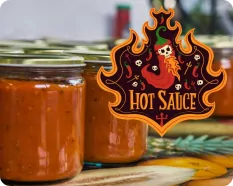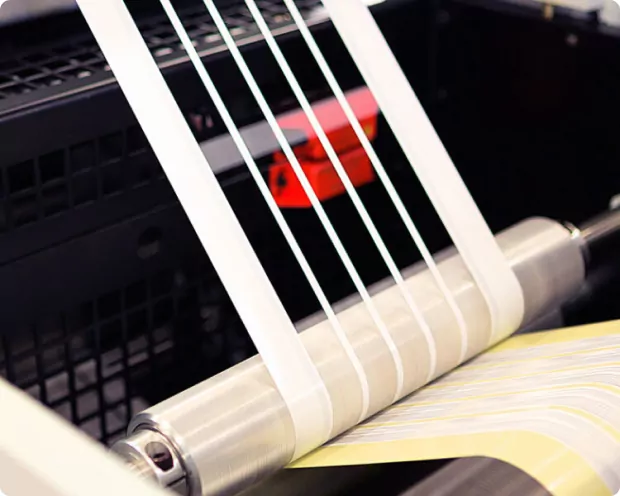Conveying Information Customers Need: Product Labeling Requirements
Your product label is one of the best messaging tools for you to connect with your customers. There’s a lot of information on that little bit of space, and you want to maximize that message!
But what are the product labeling requirements? What information do you need to include? It’s essential to figure out what MUST be on your label so that you can make the most of the rest of the label real estate.
Whether you’re running a large-scale operation or starting with a small line of products, it’s important to follow the labeling requirements for anything you sell to the public. Today we’ll explore product labeling requirements to help ensure you’re getting the right information on your products.
Why Product Labeling Requirements Exist
Imagine buying foods and products in the late 1800s. Cosmetics and food were beginning to be widely distributed across the country. Before the industrial revolution, you were stuck eating and using whatever products you could produce yourself and make in your kitchen. You knew all the ingredients and exactly how you made it. Once general stores, traveling merchants, and catalog delivery became widespread, people could get nearly any product they wanted.
At the same time, laws and regulations weren’t in place to protect consumers from the dangers of certain unknown ingredients. Many cosmetics and food products contained ingredients that were hazardous and even poisonous. For example, Coca-Cola got its name because it originally contained traces of cocaine from the coca leaf. Other items contained opium derivatives and ingredients like formaldehyde, borax, lead, and even arsenic!
Similarly frightening, food and cosmetic producers could hide spoilage by adding flavoring and coloring to mask signs of decay. When transporting certain items could take weeks at the advent of refrigeration, products could still quickly go bad. Manufacturers added dyes, perfumes, salts, acids, and even creatively colored packaging to make products seem fresher and healthier than they really were.
Finally, in the early 1900s, the U.S. Government Bureau of Chemistry regulators started to test products’ safety and began to require labeling to include certain ingredients and information. Initially, they tested many additives to ensure that the levels were safe for consumption and set forth guidelines that manufacturers had to follow. With the Food and Drug Administration’s birth in 1930, additional transparency requirements came about, including general product labeling requirements in food and cosmetics.
Over the 20th Century, food and cosmetic labeling requirements would grow and become more uniform. Finally, in 1993, the Nutrition Labeling and Education Act (NLEA) was put in place to set many of the typical label requirements we still see today. The NLEA requires ingredient listings, nutritional listings on food products, and all health claims to be substantiated and supported by research. The NLEA standardized the information on product labels and ensured that consumers know about dangerous ingredients, allergens, or other items of concern in their food and toiletries. Although some product labeling requirements are still evolving, such as those regulating essential oils and supplements, a good general rule is to follow the FDA guidelines to ensure you’re telling customers what they need to know.
Product Labeling Requirements Apply to Small Sellers Too
Suppose you’re creating a product to sell on your own or through an online marketplace like Etsy or eBay. In that case, it’s vital that you still familiarize yourself with product labeling requirements and do your best to follow the product labeling regulations.
Smaller creators may be covered under the “Cottage Food Laws” of their particular state. These state-specific guidelines give lenience to home cooks and small-scale producers, but they vary widely. Some states do not allow cottage food sellers, even at farmers’ markets. It’s essential to familiarize yourself with the laws regulating your state. If you’re shipping across the country, you should follow national (FDA) guidelines.
Restaurants that occasionally sell packaged products like their famous salsa or their deserts are still required to include ingredients, serving size, and allergen contents on their product labeling as well. During the COVID-19 pandemic, the FDA temporarily relaxed some of the stringent requirements, allowing restauranteurs to sell off extra food as “take out,” without robust product labels.
While there are thresholds in the FDA’s product labeling requirements—food sellers with under $50,000 in food sales or under $500,000 in business revenue—it’s important for even small sellers to follow the regulations. Product labeling requirements are in place to keep consumers safe and informed. By following the label guidelines, you’re setting your business up to avoid liability and the dangers that could come with a mislabeled product.
What Exactly are the Product Labeling Requirements for Cosmetics? For Food?
So if you’ve created a great new product or a great new beverage, what do you need to say on the label? What are the product labeling requirements to keep your product on the up and up?
According to the FDA and the FTC, cosmetic products must include:
- An identity statement with a common name, description, a commonly understood term, or an illustration.
- The quantity, weight, measurement, or count.
- Name and place of the manufacturer (or product distributor or packer) and a distribution statement, like “manufactured on behalf of….” (if the name and address isn’t the manufacturer).
- Directions and material facts—in other words, how your product should be used, especially if using it in another manner could be dangerous.
- Warnings should the product contain hazardous or flammable ingredients [per 21 CFR part 700].
- Ingredients “in descending order of predominance.”
Food product labels must also include:
- Prominent information panel (placement guidelines are listed in the FDA’s Food Labeling Guide).
- Ingredients, allergens, and nutrition information, following FDA specifications, including typeface, weight, and uniform display.
- Serving size.
The FDA’s comprehensive Food Labeling Guide is easy to follow and offers clarification and details on important areas like beverages, fruit juices, canned goods, and more. All food, drink, and cosmetic sellers should take the time to explore the product labeling requirements and regulations to make sure you’re including everything necessary on your product.
Once the critical product labeling requirements have been met, you can figure out the fun part of designing and creating a product label that stands out. You’ll want a label that captures your brand and catches the consumer’s eye. Fortunately, we can help! At T&L Graphic Systems, we know how to create labels that make the most of your product. Reach out today, and we’ll help you create the labels you need for all your products.




